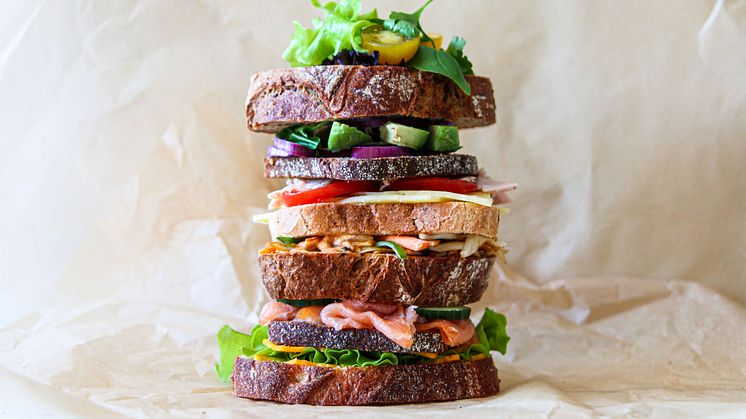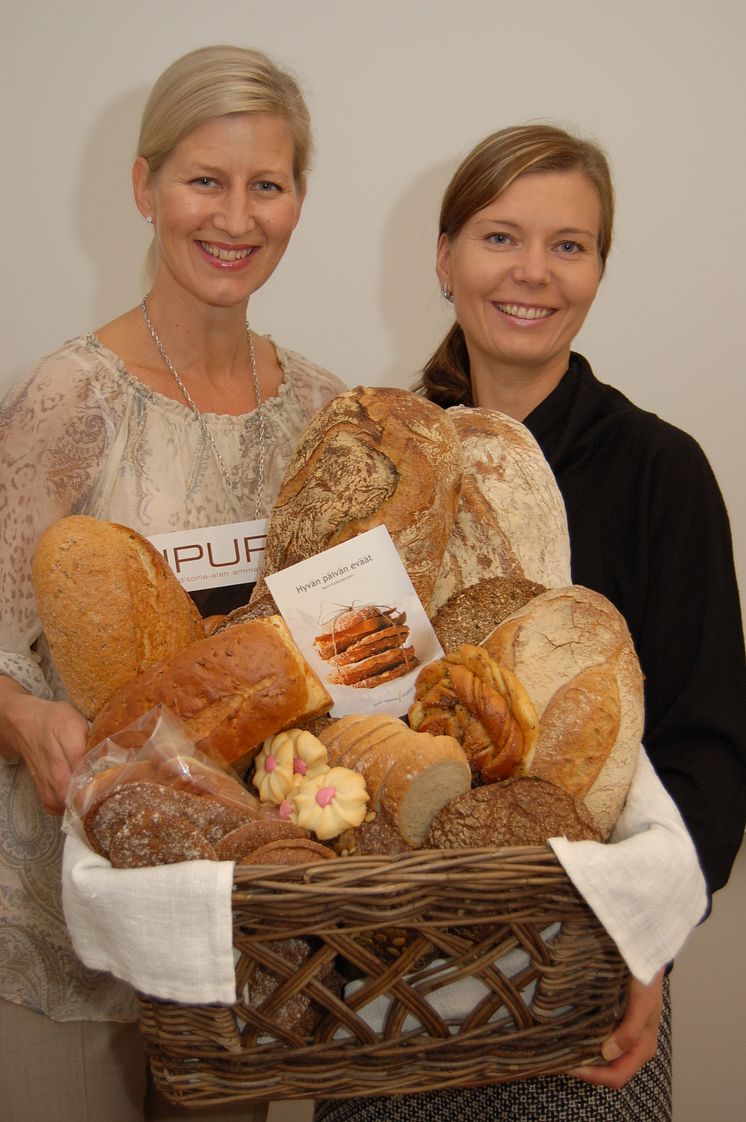
Nyhed -
From candy machines to whole grain bread - promoting bread since 1961
Finland loves and cherish ryebread. The Finnish Bread Information works to promote bread with the mission to make everyone enjoy bread. Inspired by their dedicated work we share this interview with Kaisa Mensonen Executive Manager and Terhi Virtanen - Project Manager from Finnish Bread Information.
1.Short bio Terhi Virtanen and Kaisa Mensonen
Kaisa Mensonen, Master of Science, Nutrition - Executive Manager of Finnish Bread Information since 2010.
Terhi Virtanen, Master of Science, Nutrition - Project Manager of Finnish Bread Information since 2010.
2.What is The Finnish Bread Information?
Leipätiedotus ry (Finnish Bread Information) acts as a general information service of bread business. It promotes the importance of bread on improving the public health in Finland by using different methods of communication. Leipätiedotus ry is established in 1961.
Our mission is to get everybody to enjoy bread. We want to be an active and expert opinion leader.
3.Do you have a National Dietary guideline recommending to eat whole grains in Finland?
We have recommendation for fiber: minimum 25-30 g / day.
We don’t have a national recommendation for whole grains in grams. We only have recommendations like: Whole grain cereal products contain less energy than foods made from white flour. Whole grain products are rich in fiber and more nutrient dense than refined grains. The recommended daily intake of cereal products is some six portions for women and nine for men. At least one half of this amount should be whole grain cereals.
4.What are the main sources of whole grains in Finland?
According to a recent study by THL, more than nine out of ten Finnish adults eat whole grain products. The most important whole grains in our diet are rye and oat, which account for approximately 80 per cent of whole grain intake. Daily whole grain intake is on average 63 grams among men and 47 grams among women.
Older age groups consume more whole grains than younger ones.
The most important sources of whole grain are rye breads, porridges and multigrain breads that are part of the traditional Finnish diet. They account for more than 80 per cent of the whole grain intake. The role of other foods, such as pasta and rice, is smaller.
5.How do you work to increase whole grain bread consumption?
We want to encourage people to choose whole grains in a positive way. We talk about the health effects of whole grains and how you can achieve those health effects with simple and easy means.
We have done several different projects with healthy bread.
6.Can you share a success story of promoting whole grain bread - that can inspire others?
We had a while ago a project where we managed to reduce candy machines at school and got school catering to provide a healthy snack (whole grain bread) instead. We managed to convince the school principals (and other staff) that learning in the afternoon will be easier when a healthy snack is served before the last hours.
7.What, in your opinion, are the most important next steps to increase whole grain intake in Finland?
Product development in the food industry and mass catering can do still a lot, although they have already done a lot. We need a wider range of healthy and environmentally friendly snack products made from Finnish whole grains.
Whole grains are a good choice considering both health and the environment. We can emphasize our communication in that direction. Most adults should increase their consumption of whole grains. This can be done best by changing over from products made from white, refined grains to cereal products containing whole grains.
8.What is your best advice – if a country wants to work with increasing whole grain consumption?
Industry needs to offer a wide range of healthy choices first in the market. Otherwise, it will be difficult for consumers to switch to whole grain products if there are not many options available.
9.What is your favorite whole grain dish?
Finnish rye bread – of course! Nothing is better than that.




